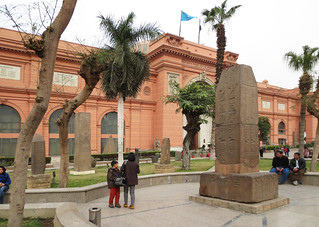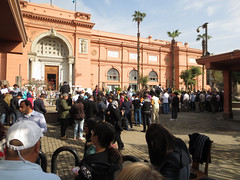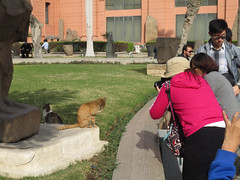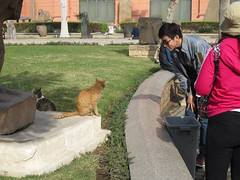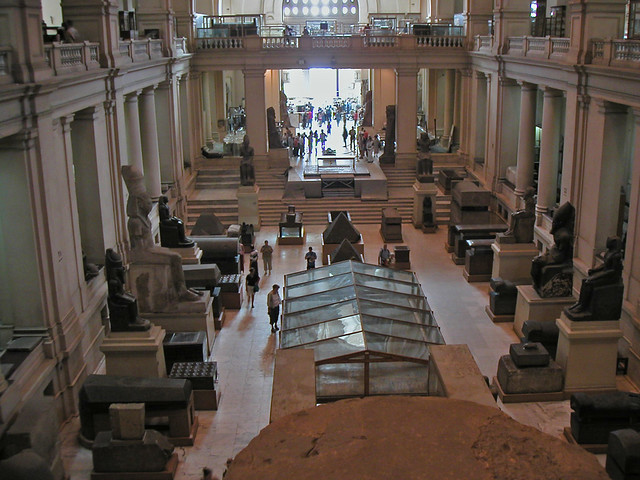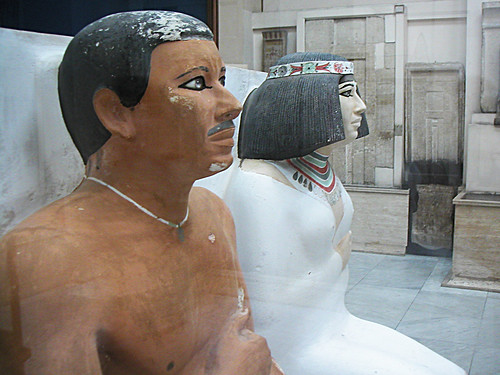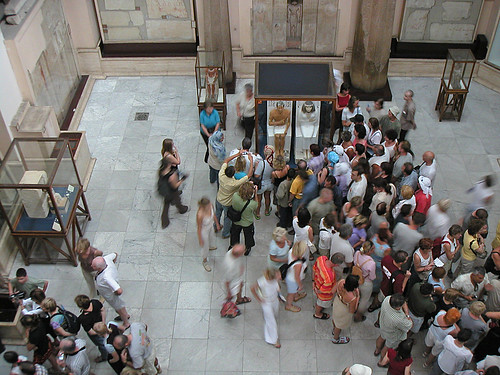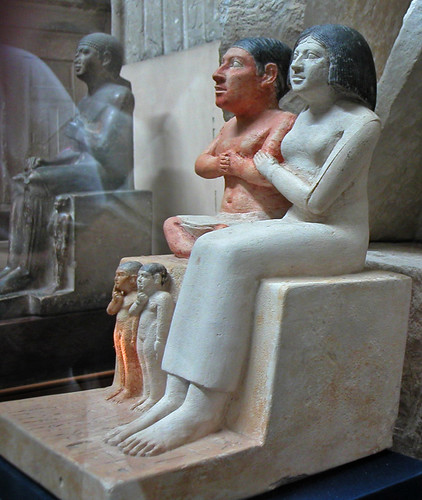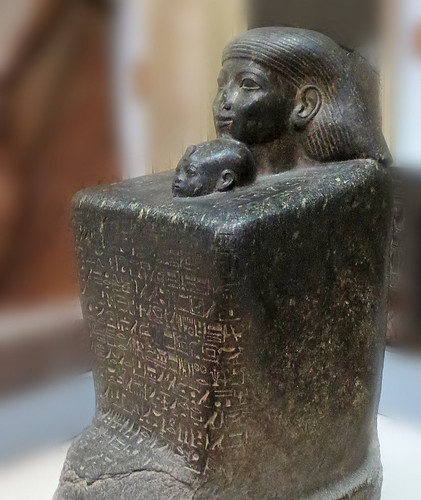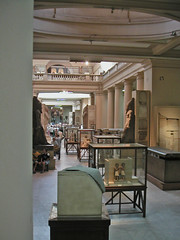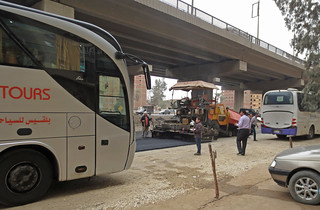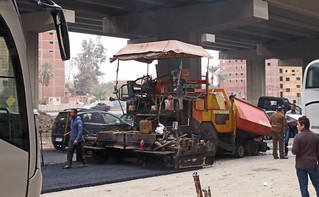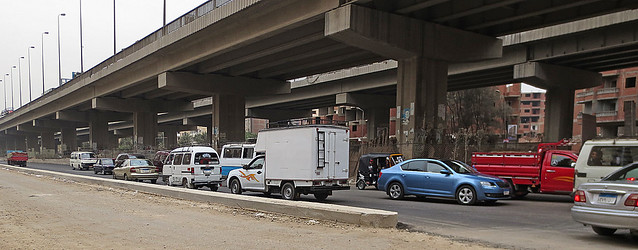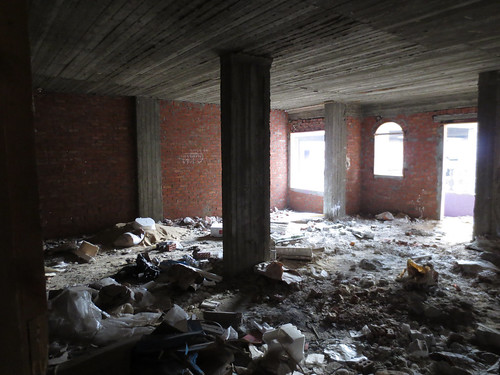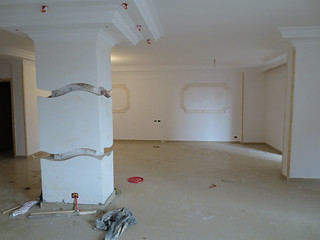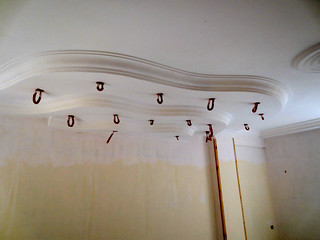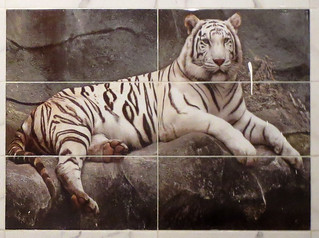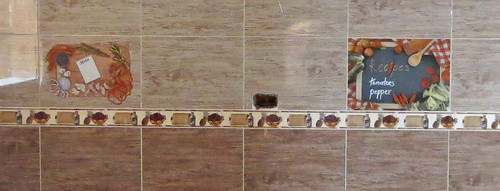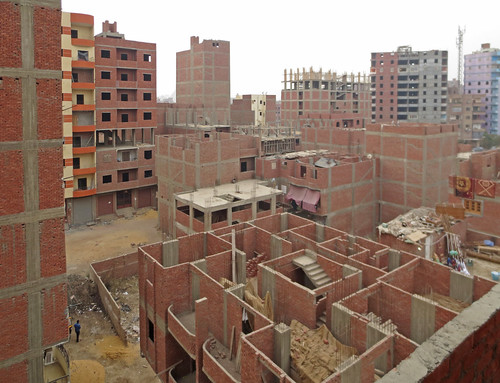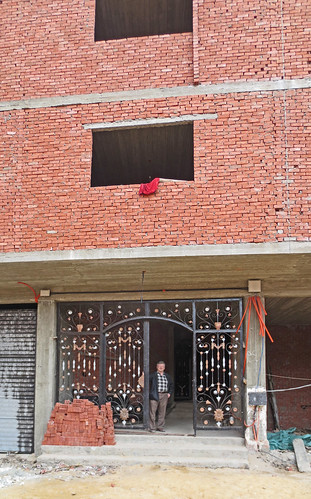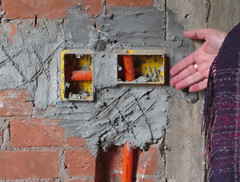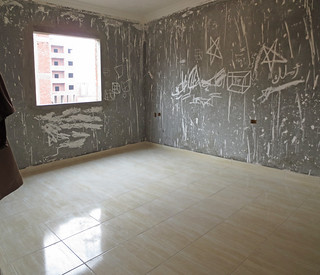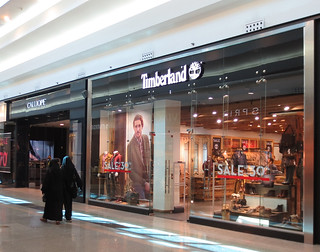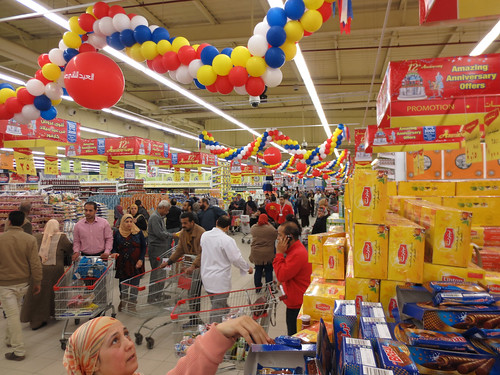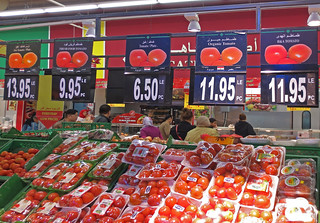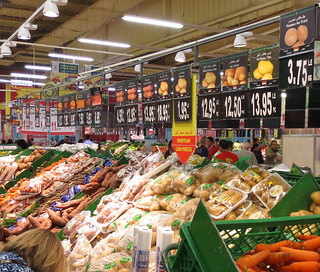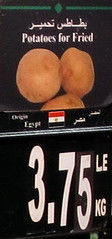The first features encountered as you approach the exhibit are the four nesting boxes that covered the inner shrouds that shielded Tut's body. Here Linda stands beside the outermost box.
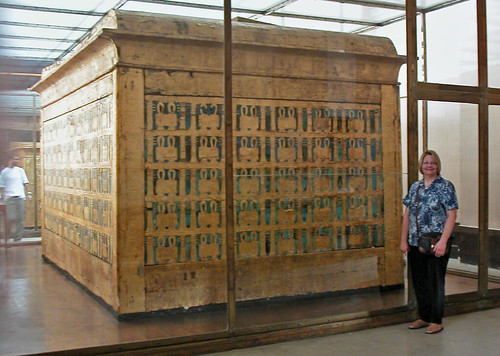
For more details on these boxes and sarcophagi and coffins, Seattle University Art History Professor, Monica Bowen, has an excellent blog post with diagrams and pictures here.
A favorite item for us on exhibit in this area is King Tut's golden throne.

Once inside the Tutankhamun room, the center of attraction is the twenty-four pound solid gold burial mask.
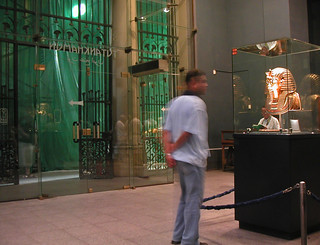

The guards (not wearing any uniforms, so hard to spot) were quick to intercept anyone pulling out a camera phone near the mask. Because of the lighting, the mask is difficult to photograph without using multiple images and HDR software to combine them. I didn't bother to make an attempt. If Egypt wants to seriously boost tourism, I have a suggestion: reopen the museum to photography for, say, one year. I would make a special trip to get in on the action if I weren't already a regular visitor.
There is a large selection of Tut treasures in the room ranging from tiny pieces of jewelry to the gold sarcophagus. Even people who don't normally care for museums may find the tour worthwhile.
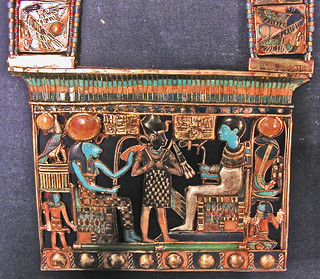

There is an excellent guide to many of the pieces in the Tut exhibit at this Tour Egypt website. Follow the links on that page for pictures.
Back outside the Tutankhamun room, there are more Tut pieces. Among my personal favorites are the canopic jars from Tut's grave which contained his viscera, removed in the mummification process.
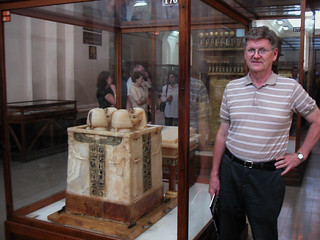
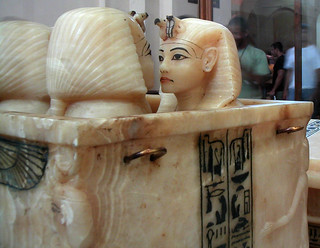
If you have been following the reports in the press about the beard being broken off of Tut's mask and being glued back on in the manner of a typical Cairo plumber or electrician, you may wonder just how bad it is. Not too bad is the answer. You need to look very carefully to spot the glue oozing out of one area of the joint.
But, it is nice to see some accountability in the form of the former conservation chief being assigned to a new role. According to the UK Guardian:
From now on her role will be limited to overseeing the contents of Egypt’s royal stables.

